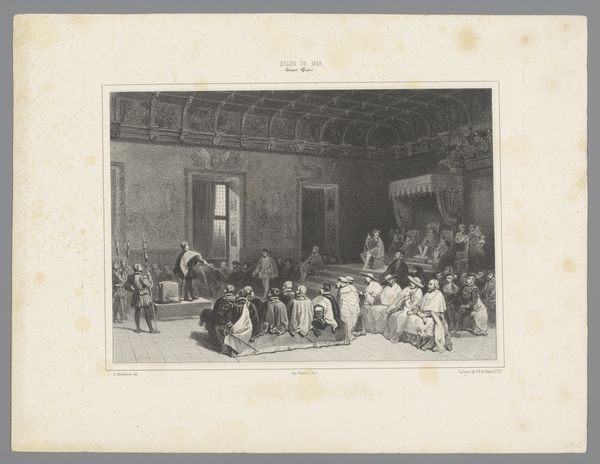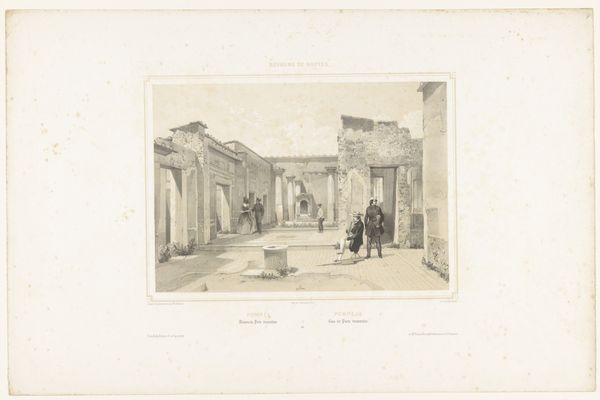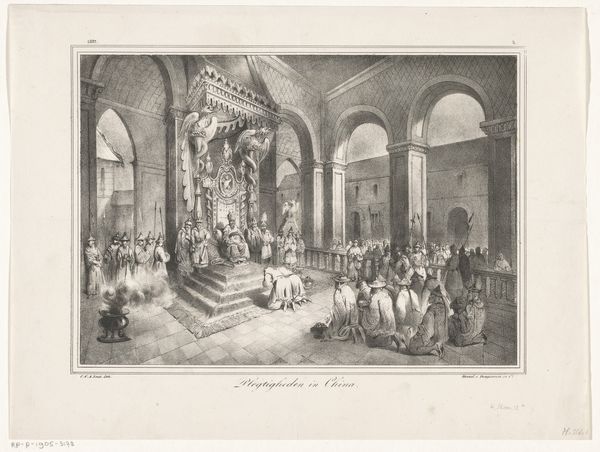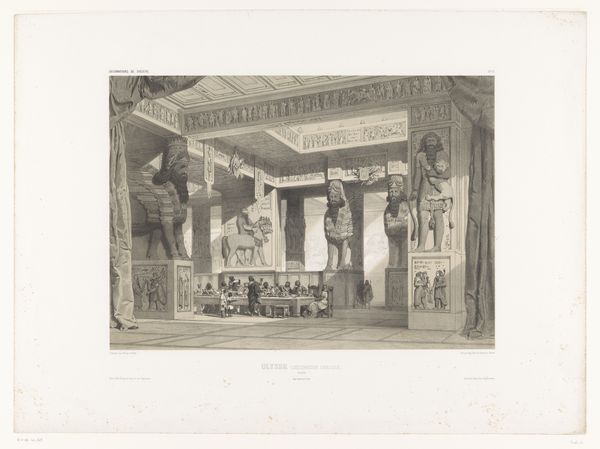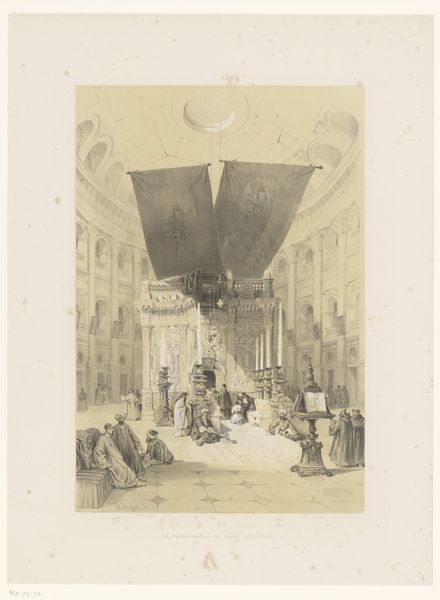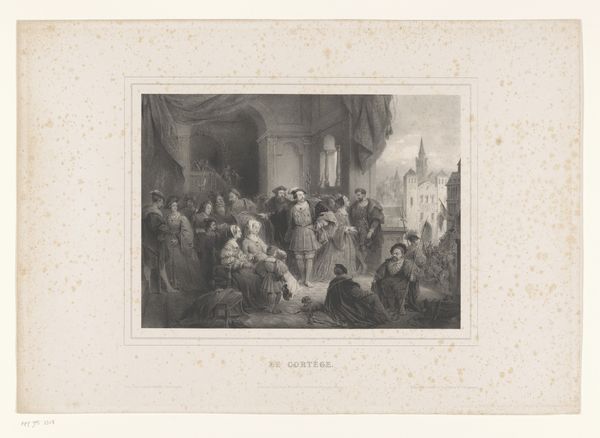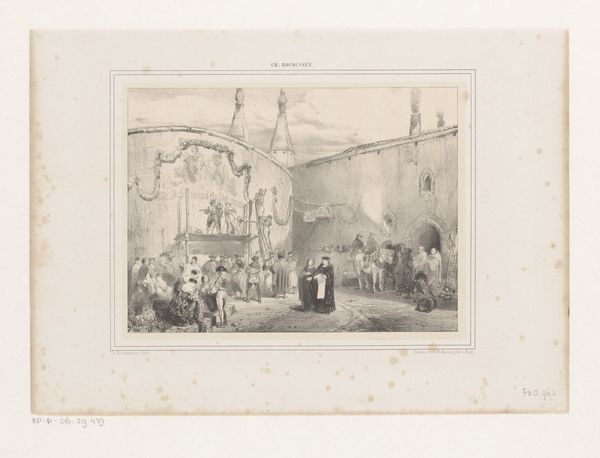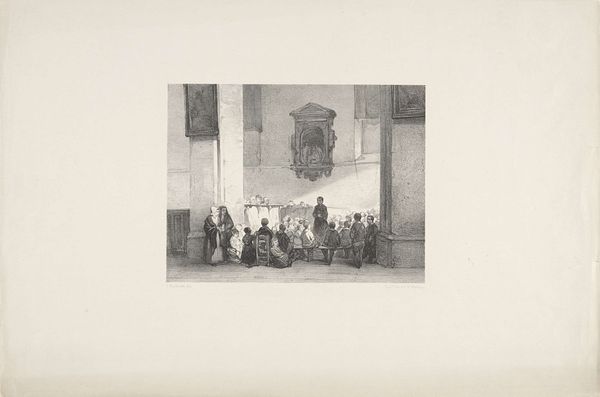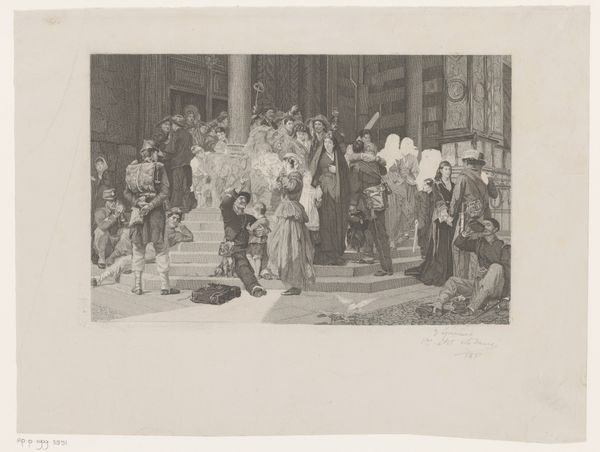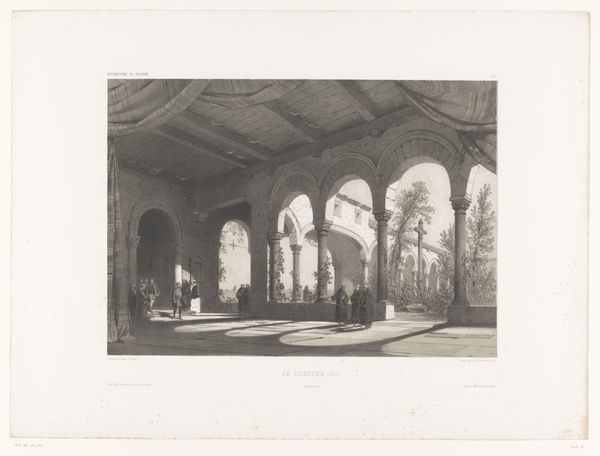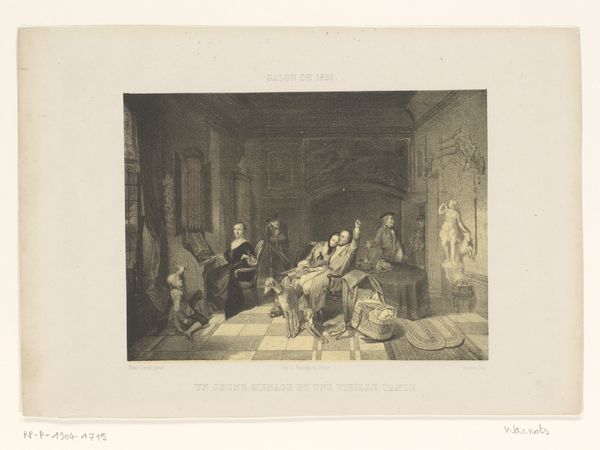
print, engraving
#
print photography
#
photo restoration
# print
#
landscape
#
archive photography
#
historical photography
#
history-painting
#
engraving
#
realism
Dimensions: height 393 mm, width 530 mm
Copyright: Rijks Museum: Open Domain
Curator: This print, created in 1852 by François Stroobant, depicts the interior of the Church of Saint Helena in Bethlehem. Editor: It's a remarkably detailed and almost ghostly scene, isn’t it? The stark light and shadow create such a weighty, historical feel. Curator: Absolutely. Stroobant captured this intricate space through engraving. Look closely at the way he renders the textures of the stone, the delicate patterns of the hanging lamps. As a genre, history-painting saw a peak of sorts at the time. But the realism here is especially striking considering it's a print, a medium often employed for disseminating information to a broad audience. Editor: It speaks to power, doesn’t it? These grand religious spaces are always implicitly tied to power structures. Notice the hierarchy in the positioning of the figures: the more elaborately dressed congregants, the placement of religious leaders slightly above the others, these details underline authority and reinforce social order. I’m also intrigued by the fact it’s the interior depicted, more so than the religious practice in it. Almost to tell a different story. Curator: I see your point. Consider also how this print served to document a sacred site that, for many Western viewers at the time, was geographically and culturally remote. It offers a visual connection, shaping perceptions of both religious space and cultural practice. Museums also played a major role as ‘brokers’ in these exchanges. Editor: Precisely. Museums mediate our encounters with the unfamiliar. This image isn't just a recording, it's an interpretation influenced by colonial and orientalist perspectives, and perhaps serving the role of justifying certain political positions regarding power and religious dominance. And by implication, influencing those who acquired the print, both in Belgium and elsewhere. Curator: A fascinating point that leads to the work's enduring significance. Even now, it allows us to consider how imagery has the power to inform but also to frame our understanding of history and culture. Editor: Agreed. Looking at this print today invites critical engagement: not just with the depicted architecture, but with the politics inherent in representing such sites. How can we ensure fair representation for places like these moving forward?
Comments
No comments
Be the first to comment and join the conversation on the ultimate creative platform.

